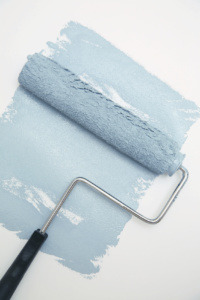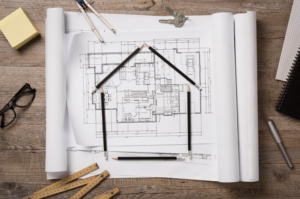Before You Pull That Home Improvement Trigger
Choose The Right Projects For Better ROI
Article By Erik J. Martin, CTW Features
That costly custom crystal chandelier you’ve been eyeing would look perfect in the foyer. You’re convinced that dark quartz countertops would really make your kitchen pop. And your kids keep asking you to install that in-ground swimming pool you’ve hinted about.
All these wish-list upgrade items make perfect sense to you. But they may not be so well-received by your home’s next owner, according to the experts. You may never recoup the costs you pay for many remodeling projects when it’s time to sell your home.
That’s why it’s smart to think long and hard about the return-on-investment (ROI) potential of any home improvement you plan to make before you commit.
According to Realtors polled for the National Association of Realtors’ (NAR) 2019 Remodeling Impact report, the top five projects that are most likely to add resale value to your home are, in order, a complete kitchen renovation, kitchen upgrade, HVAC replacement, new master suite/owners’ suite, and bathroom renovation.
But the enhancements that will likely yield a lower ROI than you hope and are less recommended by Realtors include:
A closet renovation (40 percent of value expected to be recovered from the project; only four percent of Realtors have suggested sellers complete before attempting to sell; zero percent of Realtors said the project helped close a sale),
Adding a new bathroom (50 percent expected value recovered; five percent of Realtors suggested; one percent said the project helped close a deal),
Converting an attic to a living area (56 percent; two percent; zero percent).
The lesson to be learned here?
“If an owner is looking to sell, they should focus on ROI before investing in a project renovation. But they also need to consider what is going to bring a potential buyer into their home,” says Dr. Jessica Lautz, vice president of demographics and behavioral insights for the NAR in Washington, D.C.
On the other hand, “ROI becomes less important if you’re planning on staying put,” she says.
Jamell Givens, partner at Amityville, New York-based Leave the Key Homebuyers, shares this mindset.
“With the high cost of home improvements today, homeowners should consider the return on investment carefully – especially if they plan to stay for only a few years after completing the improvement,” notes Givens. “But if you plan to live in your house for a long time, the financial value of these improvements becomes irrelevant. The improvement will likely become old and dated at a faster rate than in the past, and today’s buyers want new renovations that reflect modern styles.”
Case in point: Even if your kitchen was installed within the last seven years and is in excellent condition, “I would renovate it in order to achieve a good ROI,” suggests Givens.
Fiona Dogan, a global real estate advisor for Julia B. Fee Sotheby’s International Realty in Rye, New York, says ROI can vary significantly, depending on the local market and local buyer preferences.
“Generally speaking, remodeling on a lower-priced home has a bigger percentage increase on the home’s value than remodeling a higher-priced home,” Dogan explains.
But regardless of your home’s value or area, some renovations are almost always going to pay off better than others and be a safe bet.
 “These include finishing rooms that add square footage, upgrading the kitchen and its appliances, updating the master bath and secondary bathrooms, substituting carpeting with hardwood floors or refinishing existing hardwood floors, and adding a fresh coat of paint,” says Michael Valente, managing partner with Renovation Sells, a Chicago-headquartered remodeling firm.
“These include finishing rooms that add square footage, upgrading the kitchen and its appliances, updating the master bath and secondary bathrooms, substituting carpeting with hardwood floors or refinishing existing hardwood floors, and adding a fresh coat of paint,” says Michael Valente, managing partner with Renovation Sells, a Chicago-headquartered remodeling firm.
“If you’re planning to stay in your home long-term, you can approach these renovations with your own design aesthetic and budget as the guiding factors. But if you’re expecting to sell in the next few years, you should design to appeal to a wide swath of prospective buyers and focus on items that buyers often notice first and care about the most,” Valente adds.
Likewise, avoid lavish, indulgent, and ornamental updates that may be too personalized for your area market.
“Remember that the cost of highly personalized additions such as a children’s theater, elaborate home gym with a rock-climbing wall, or indoor hot tub may never be recovered,” says Dogan. “Think classic, timeless, smart, and sustainable.”


